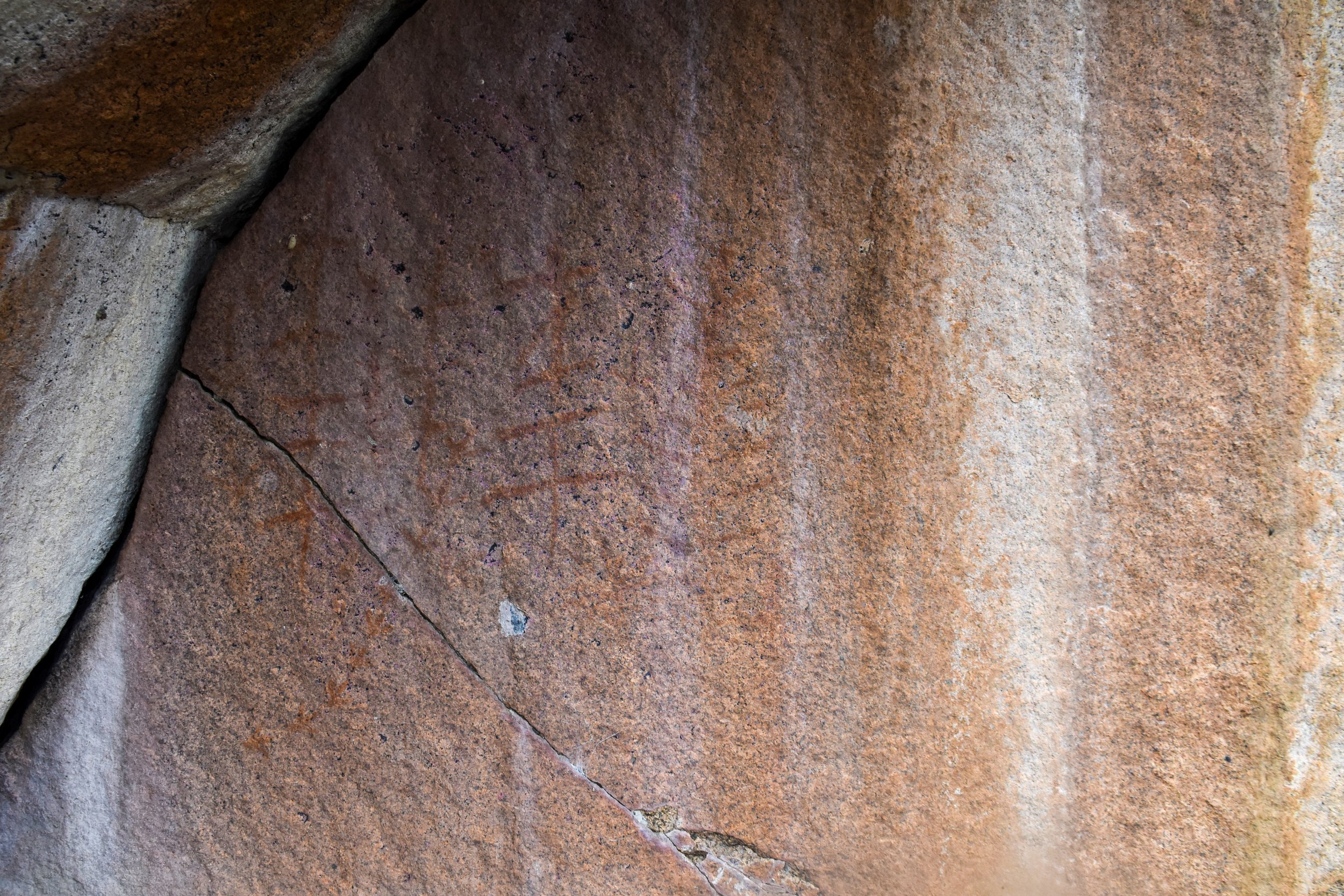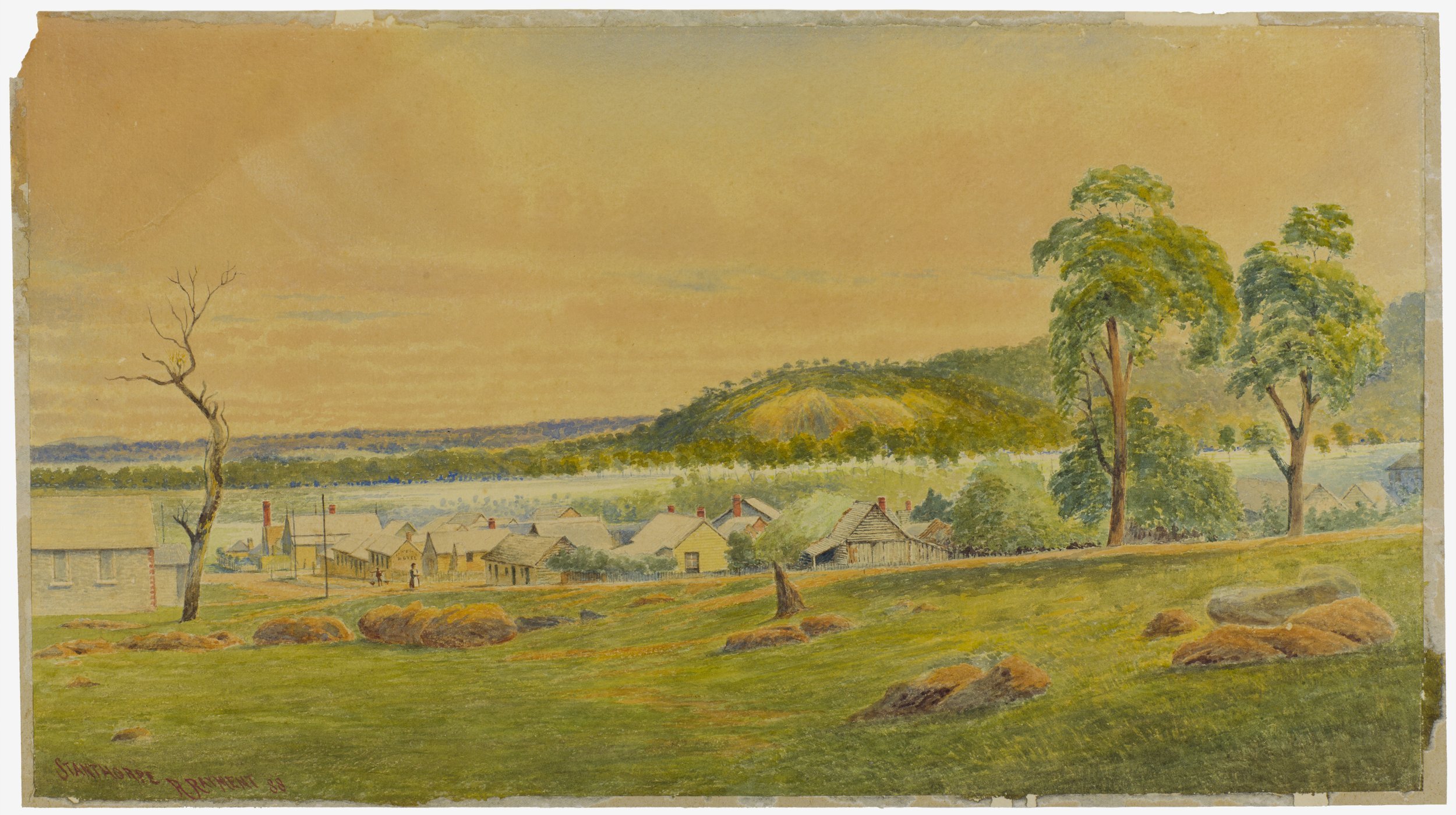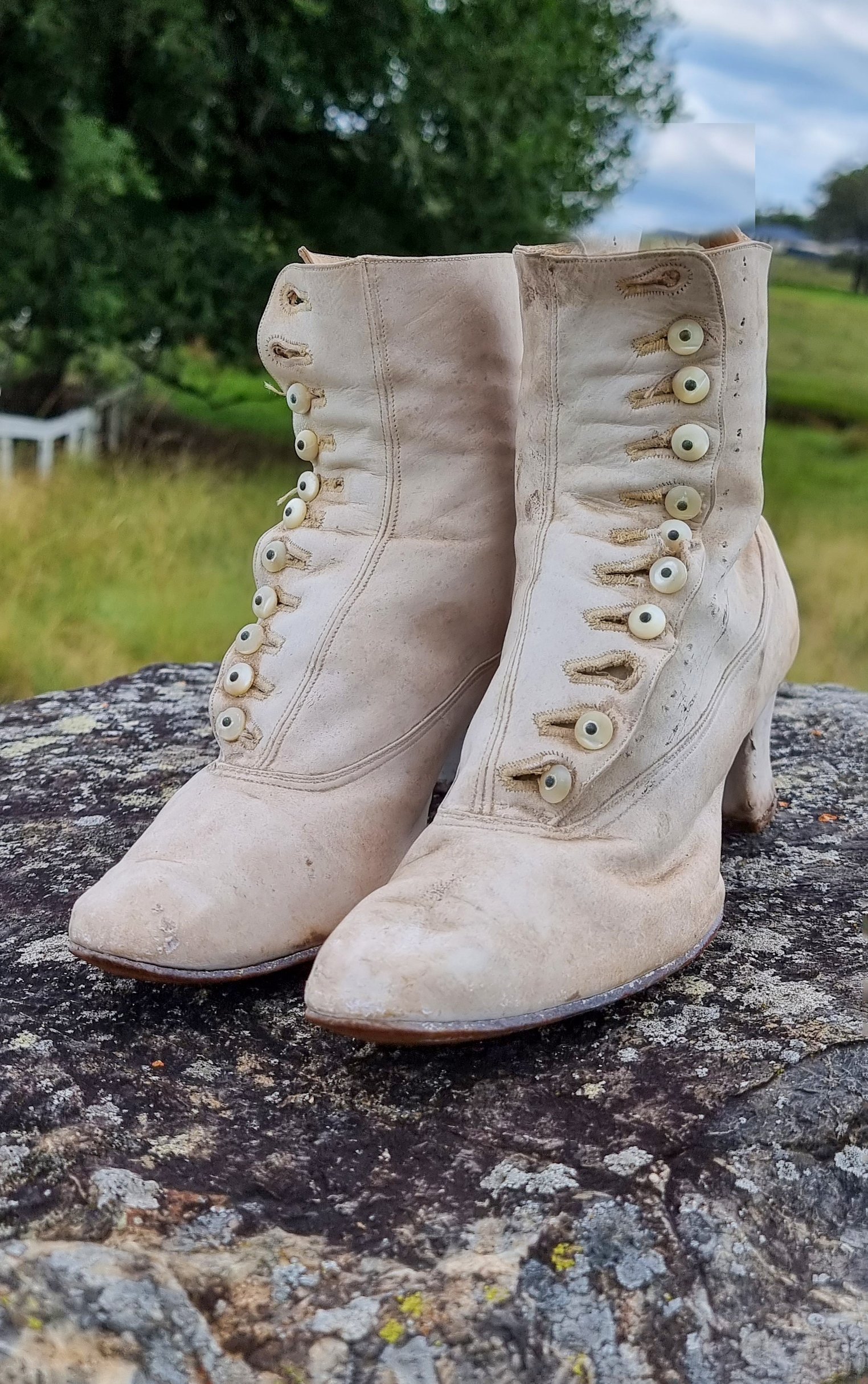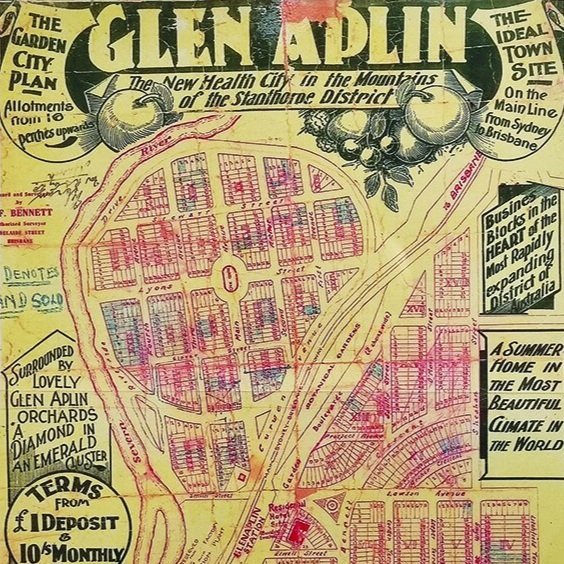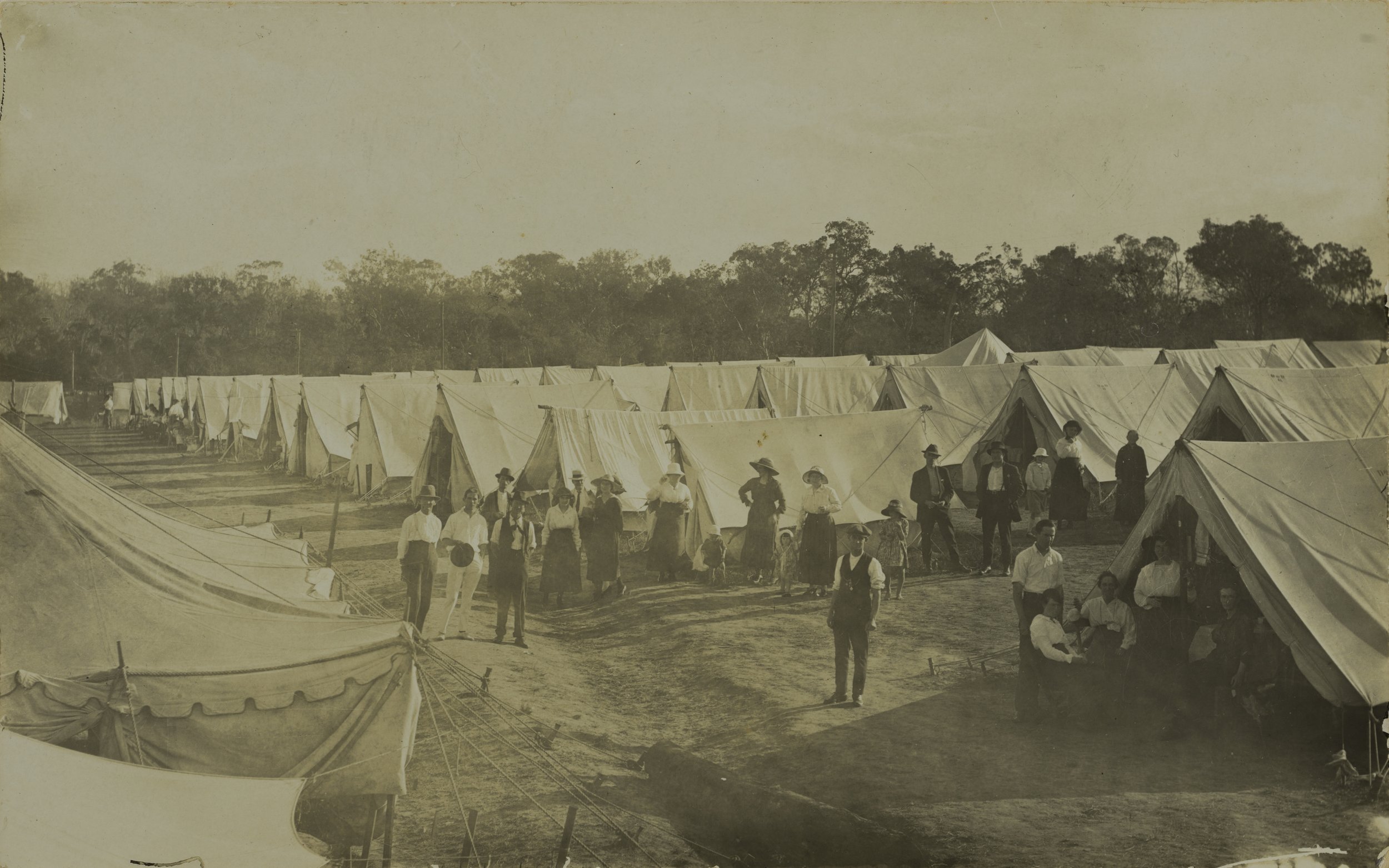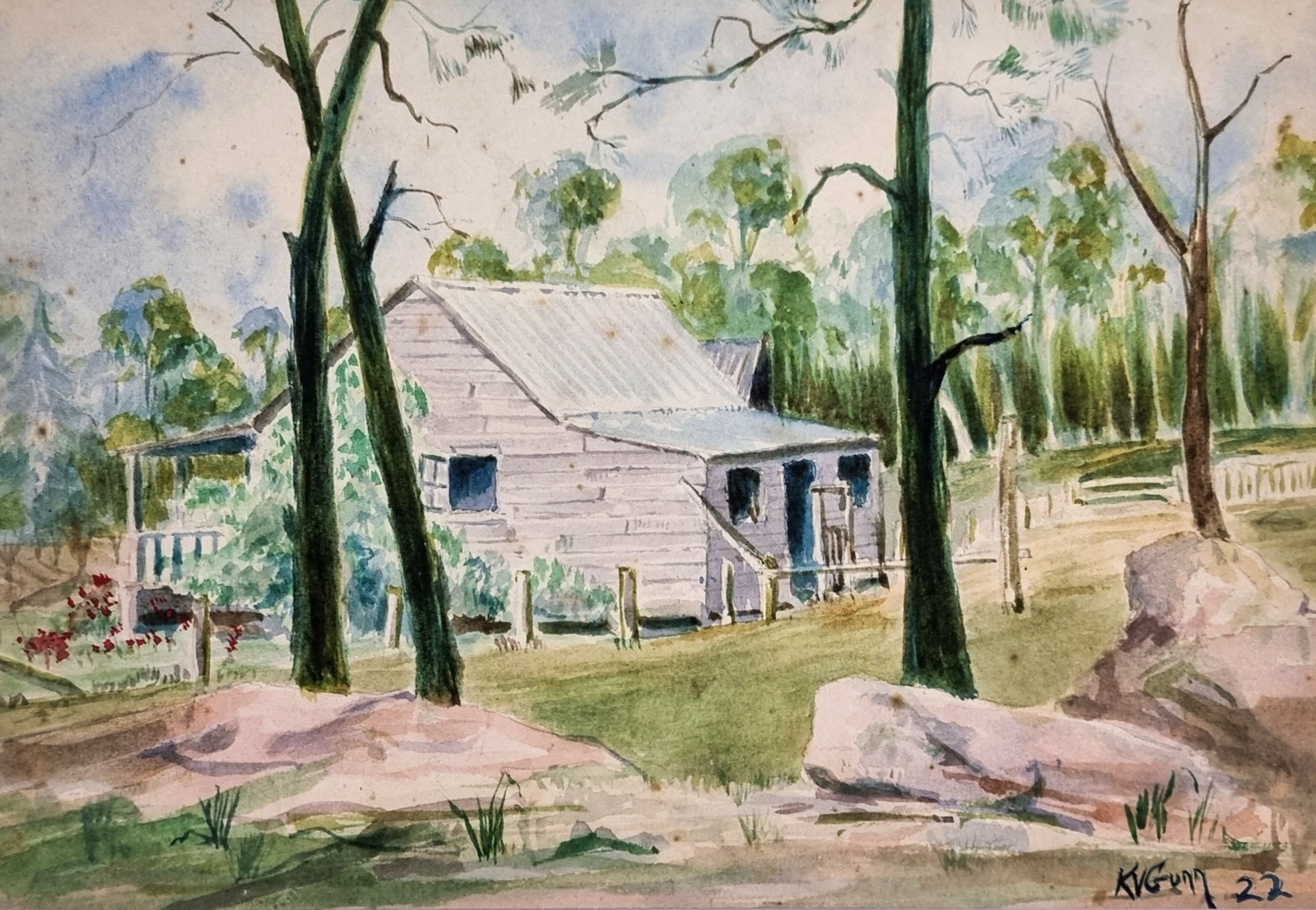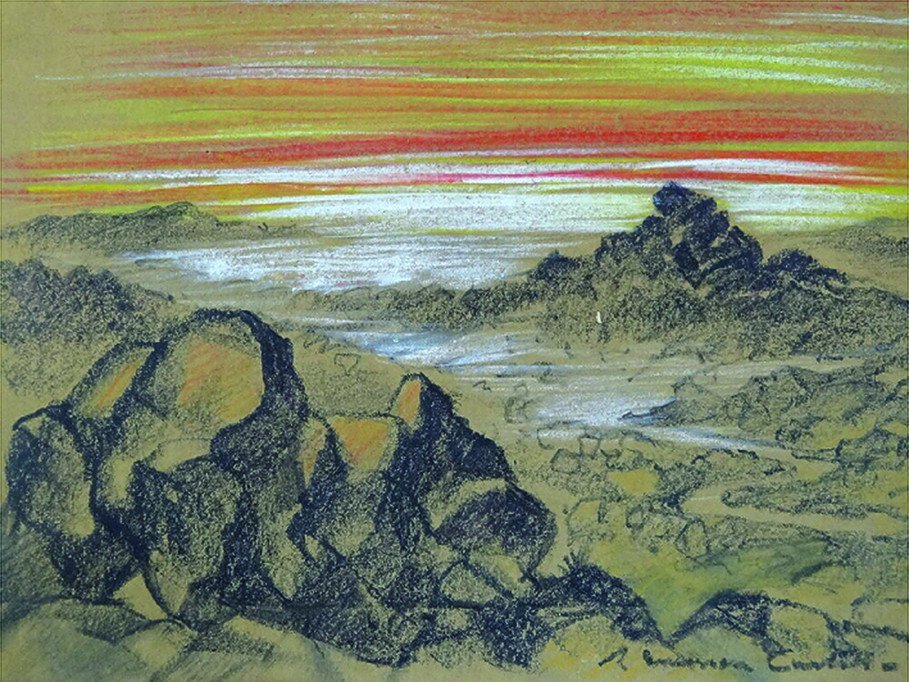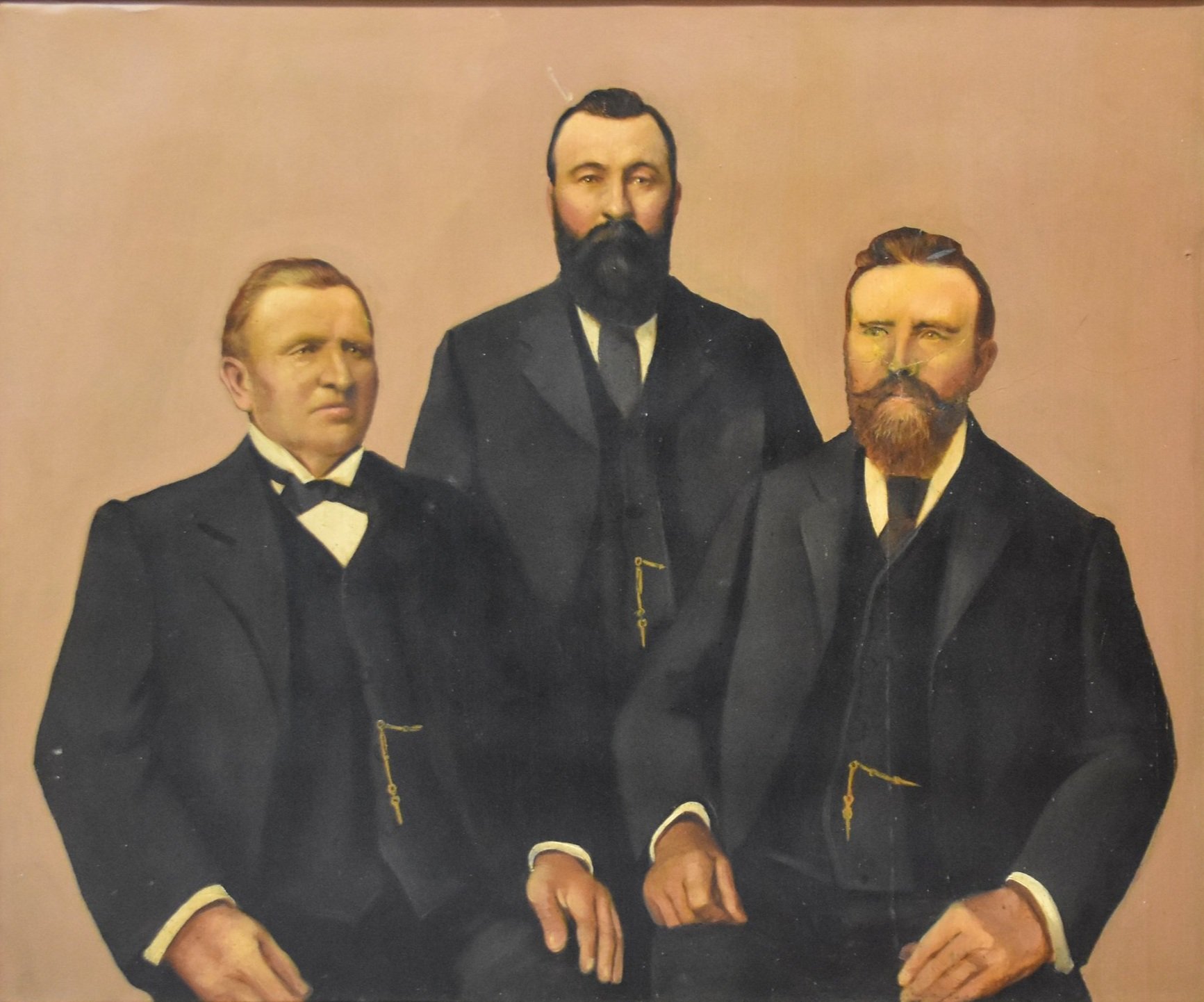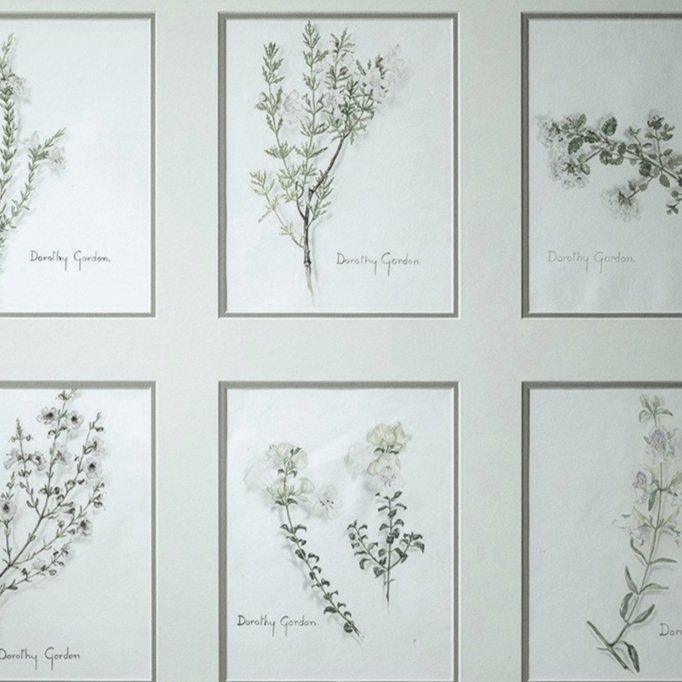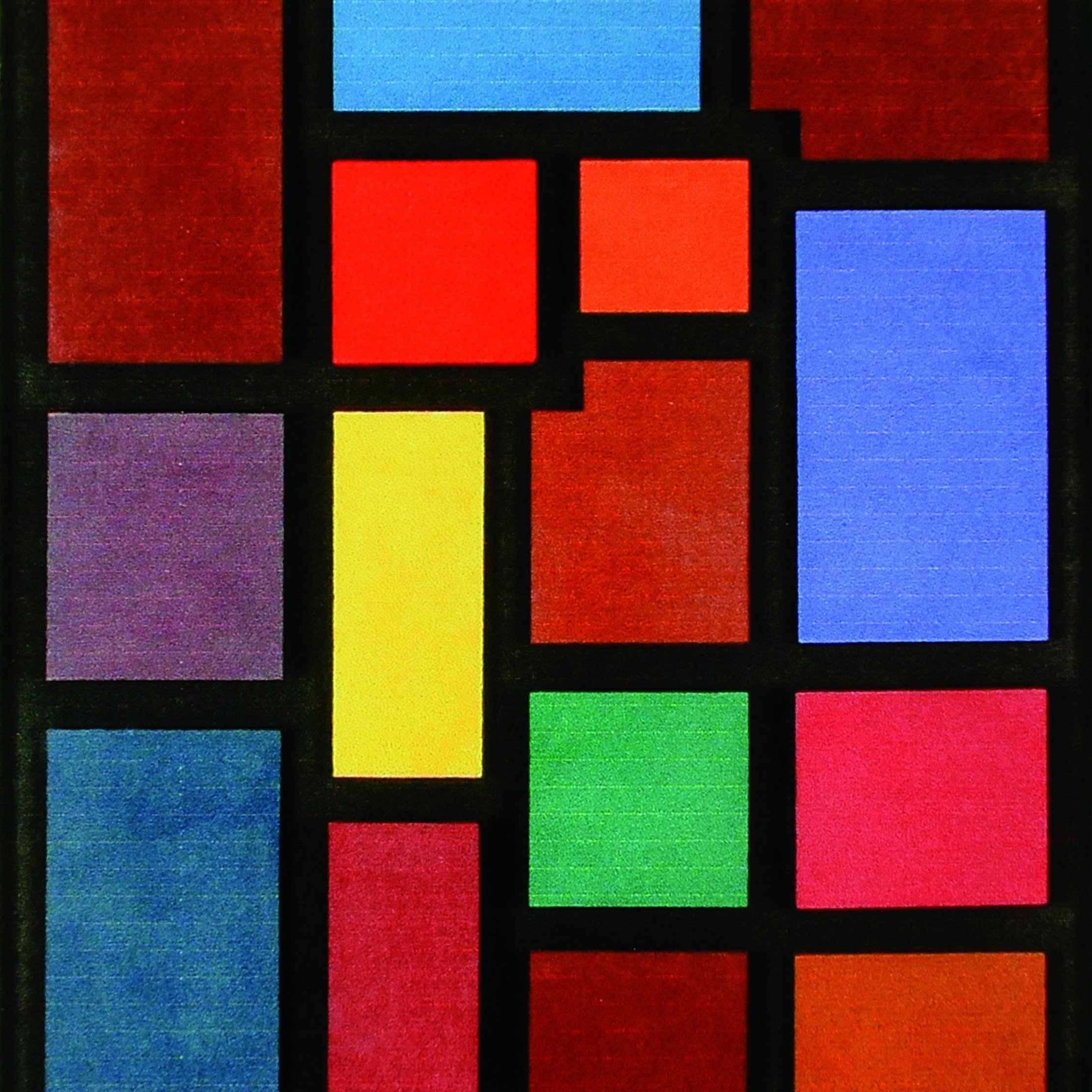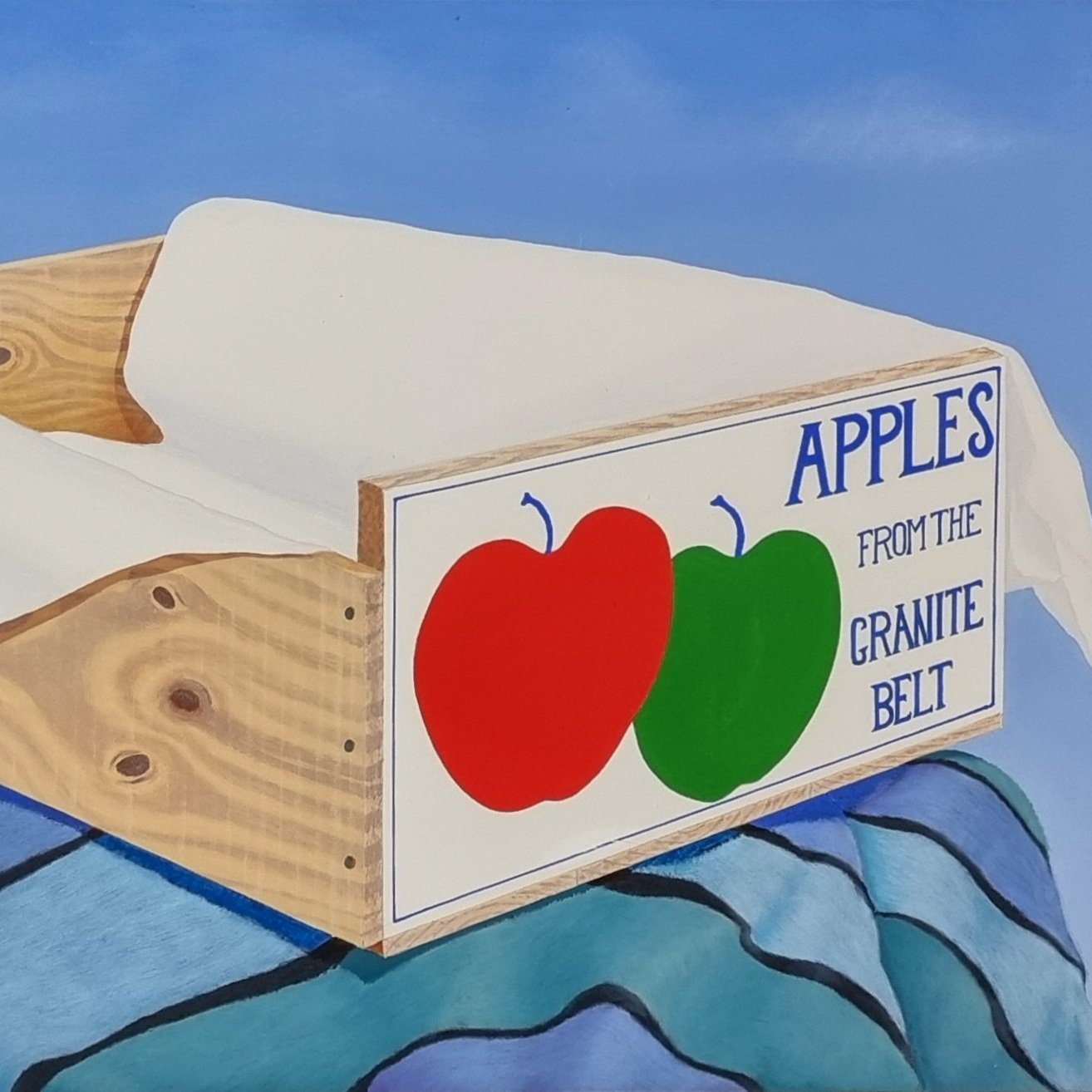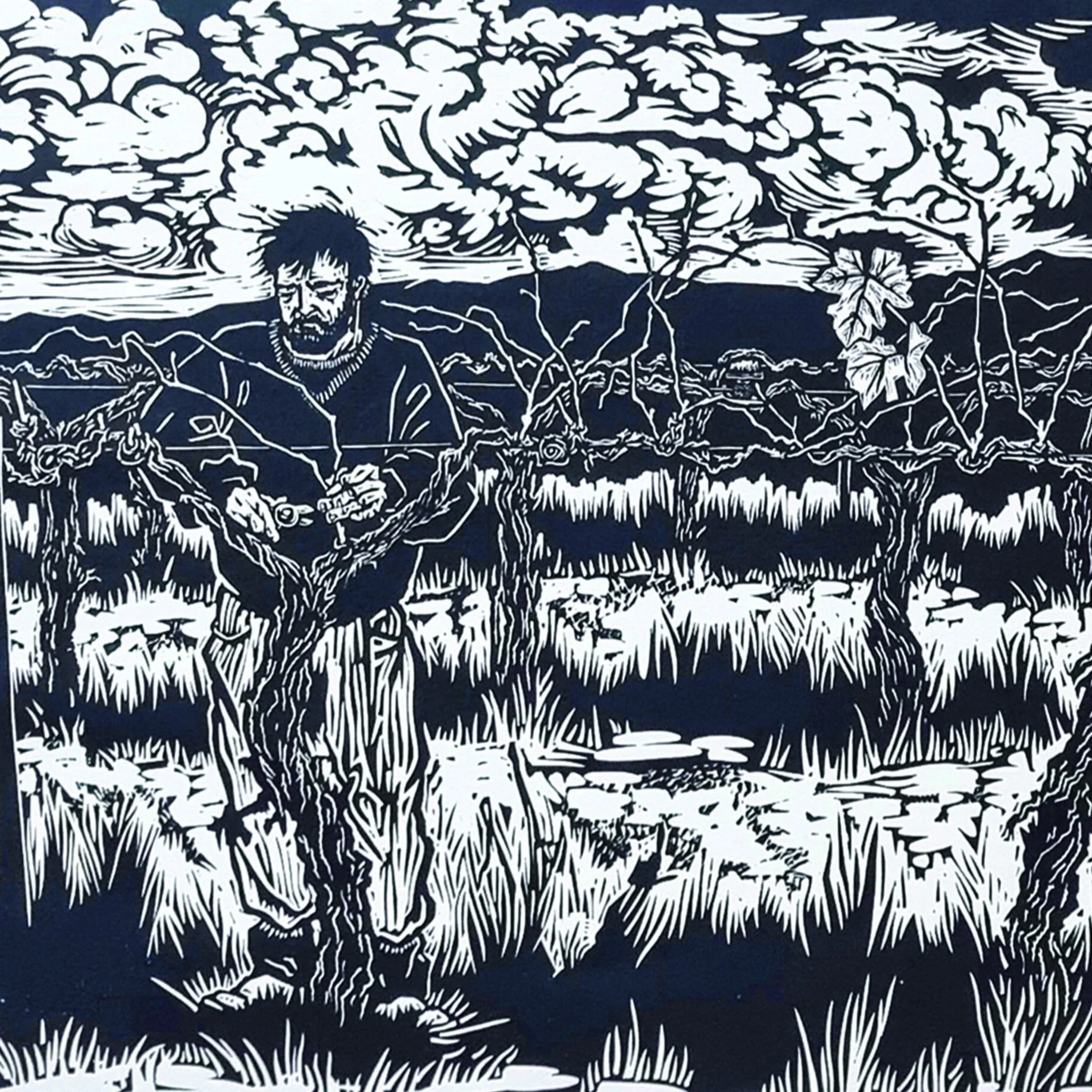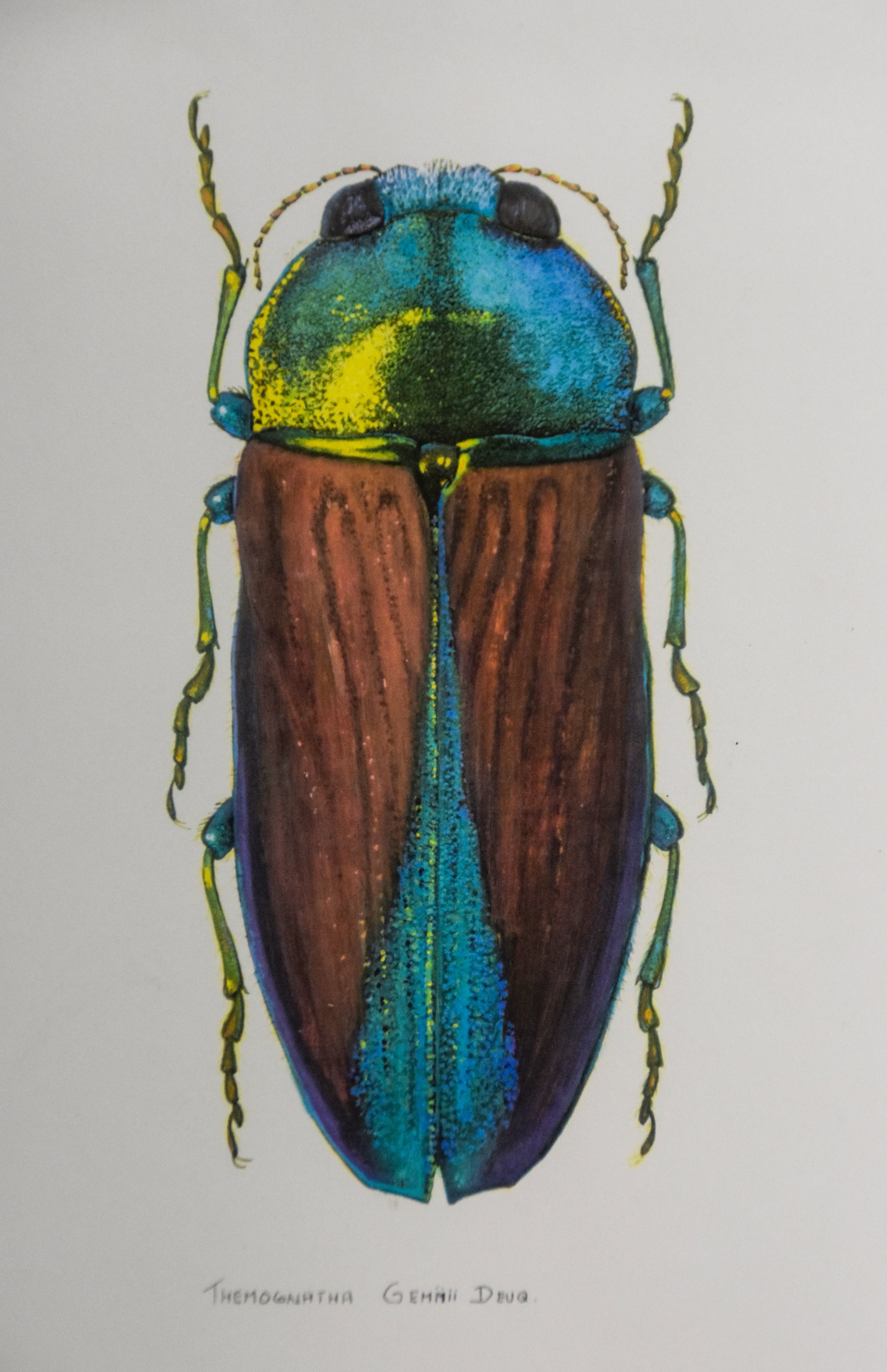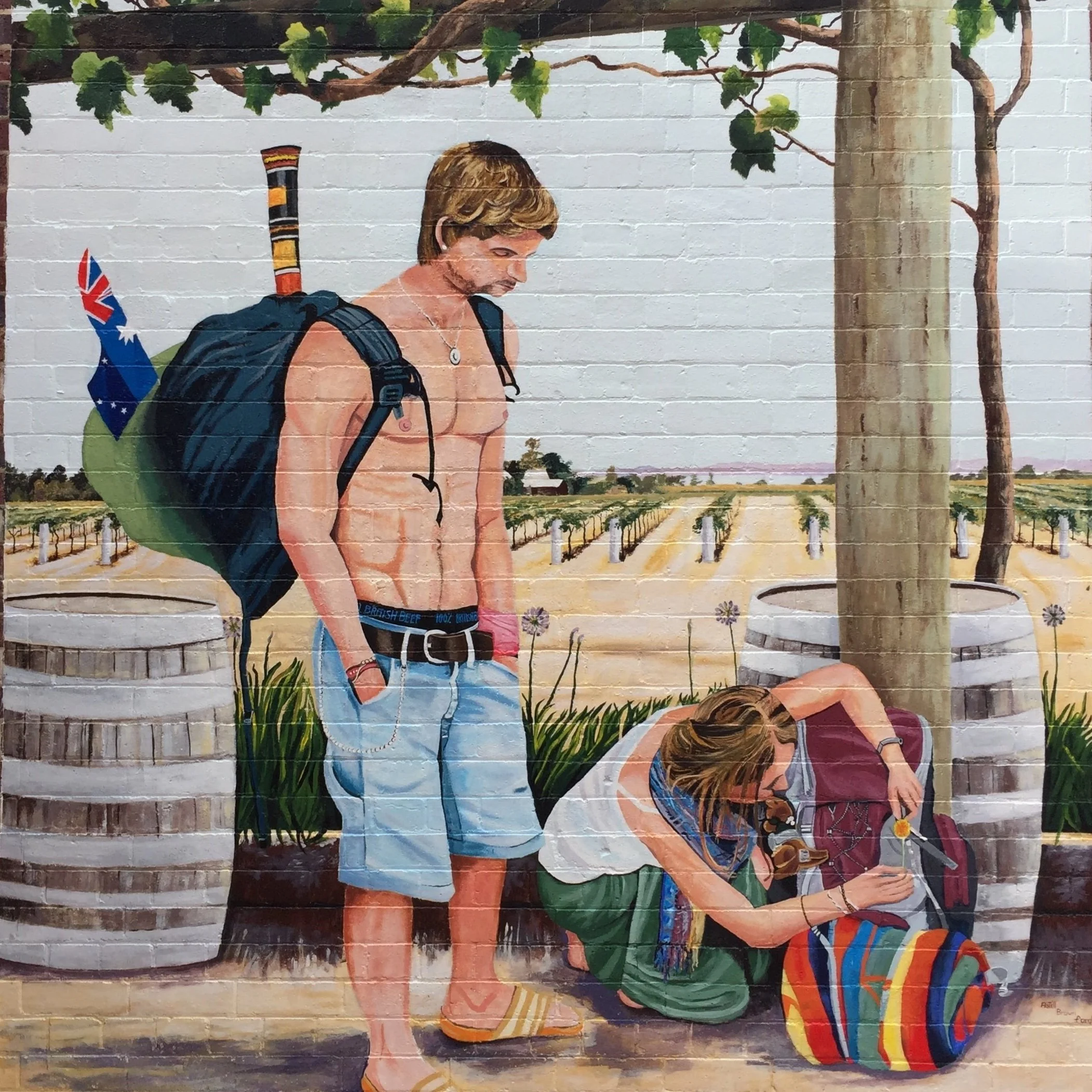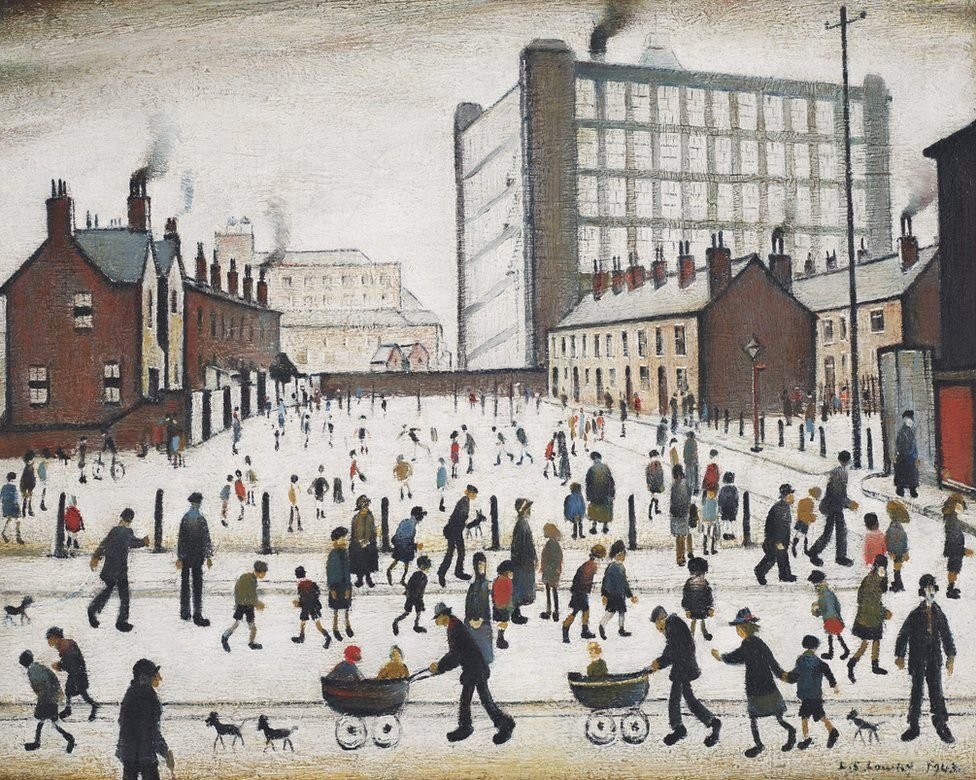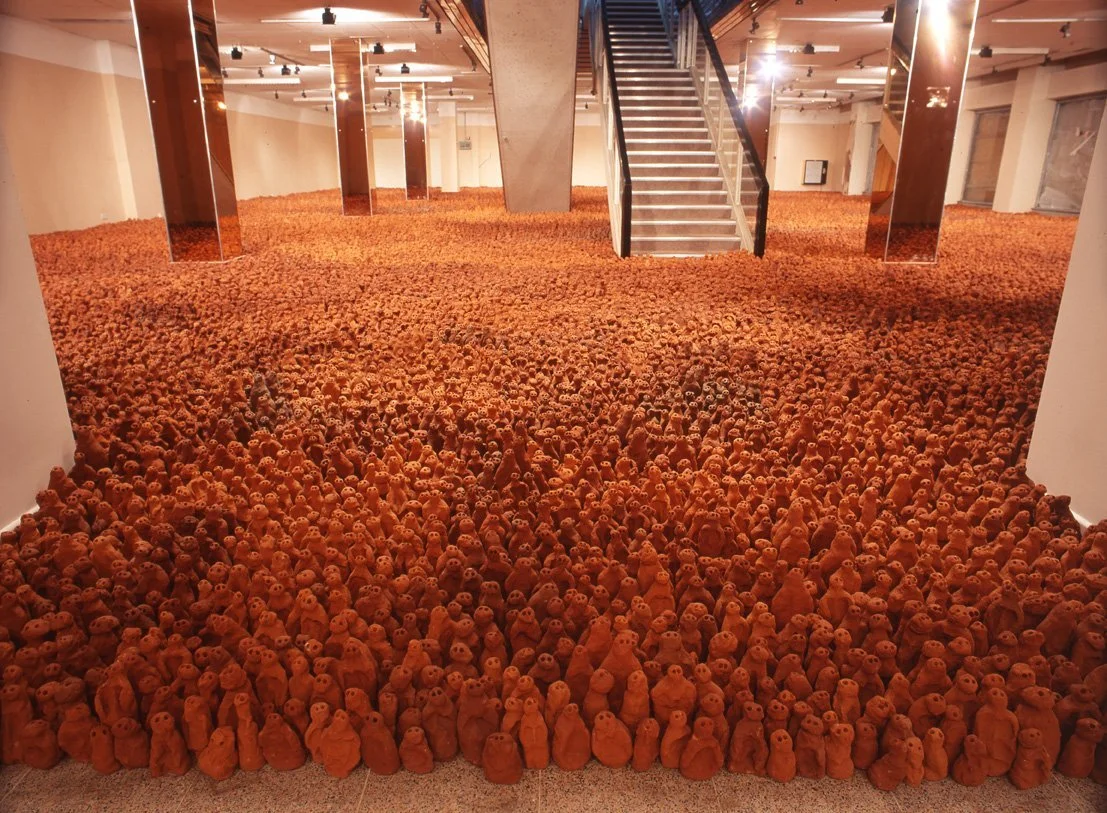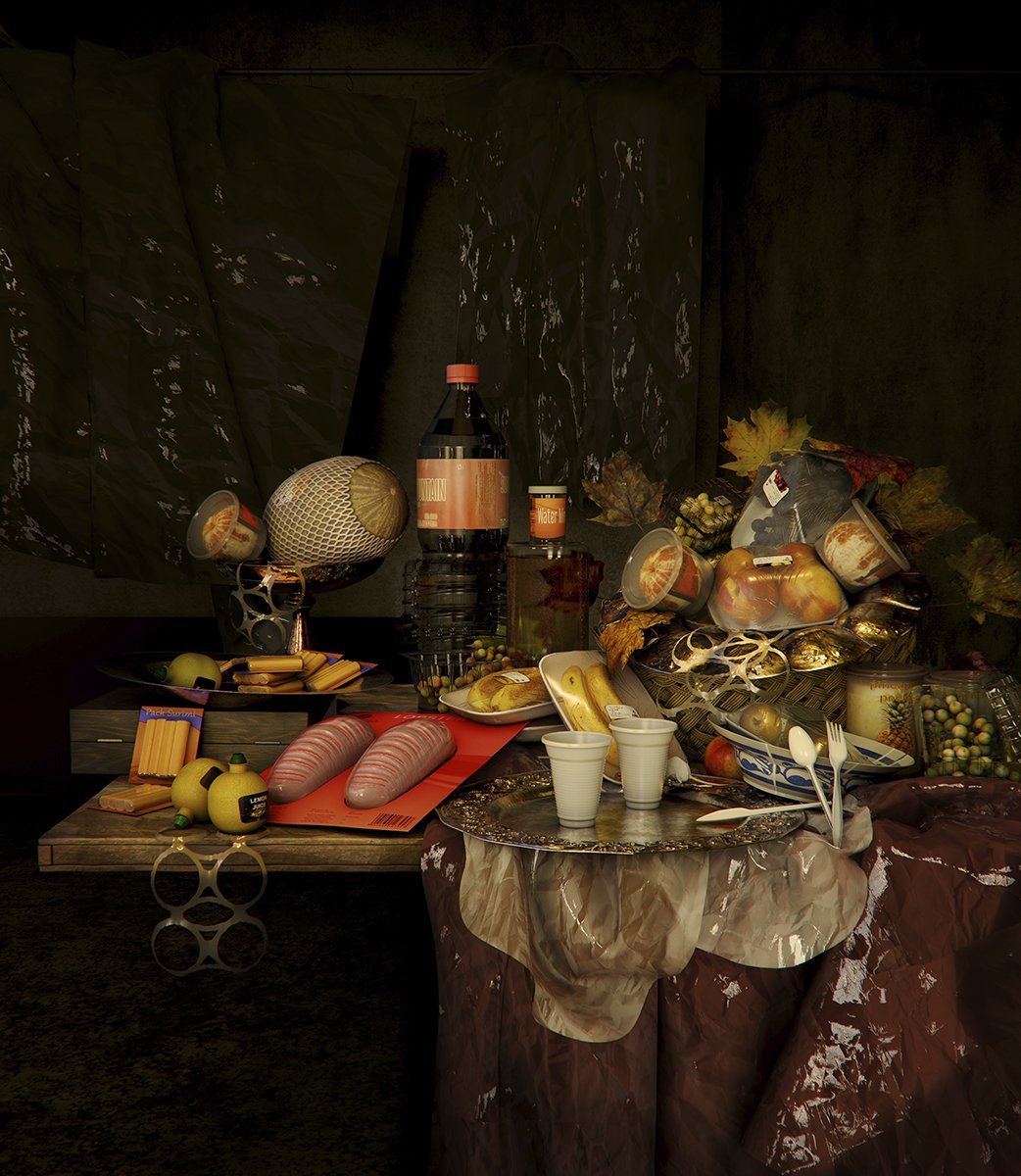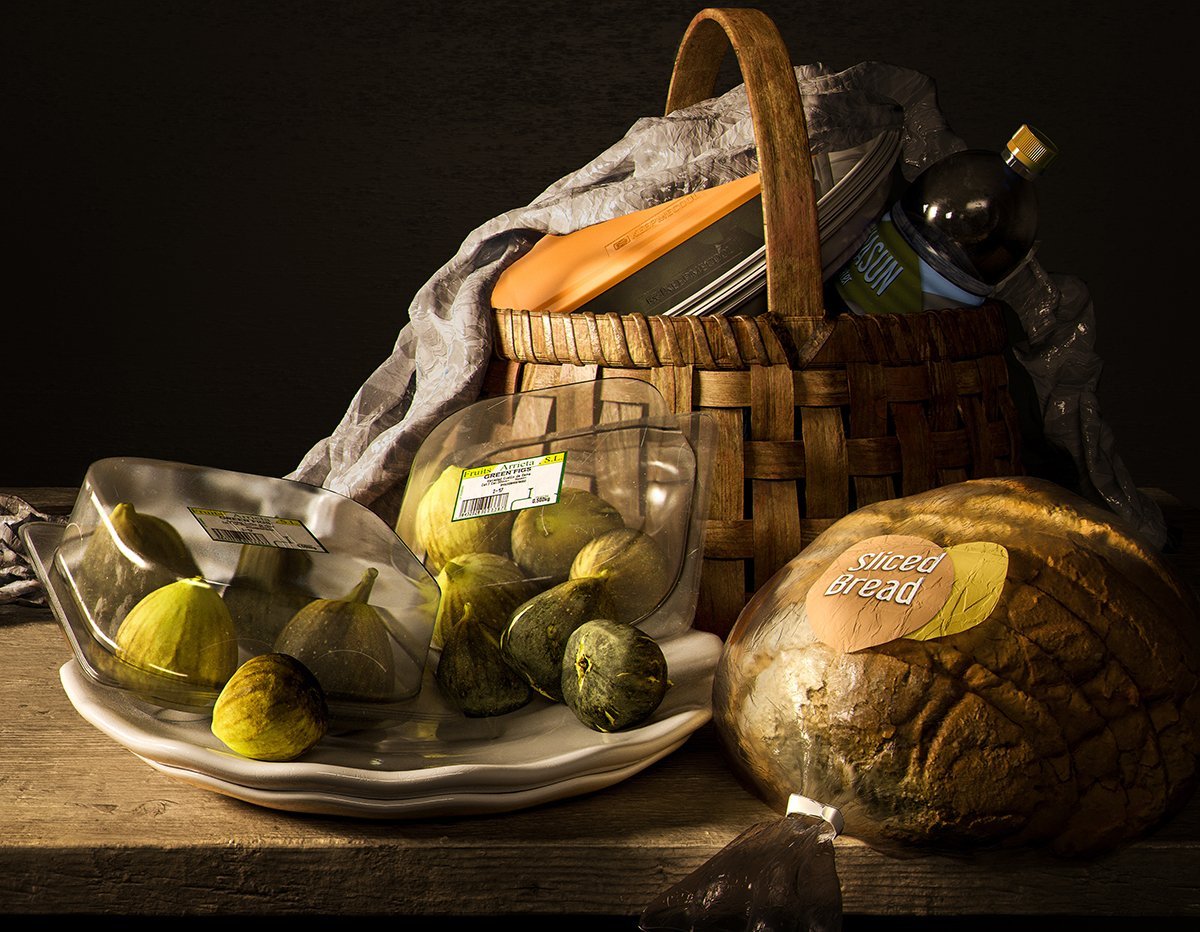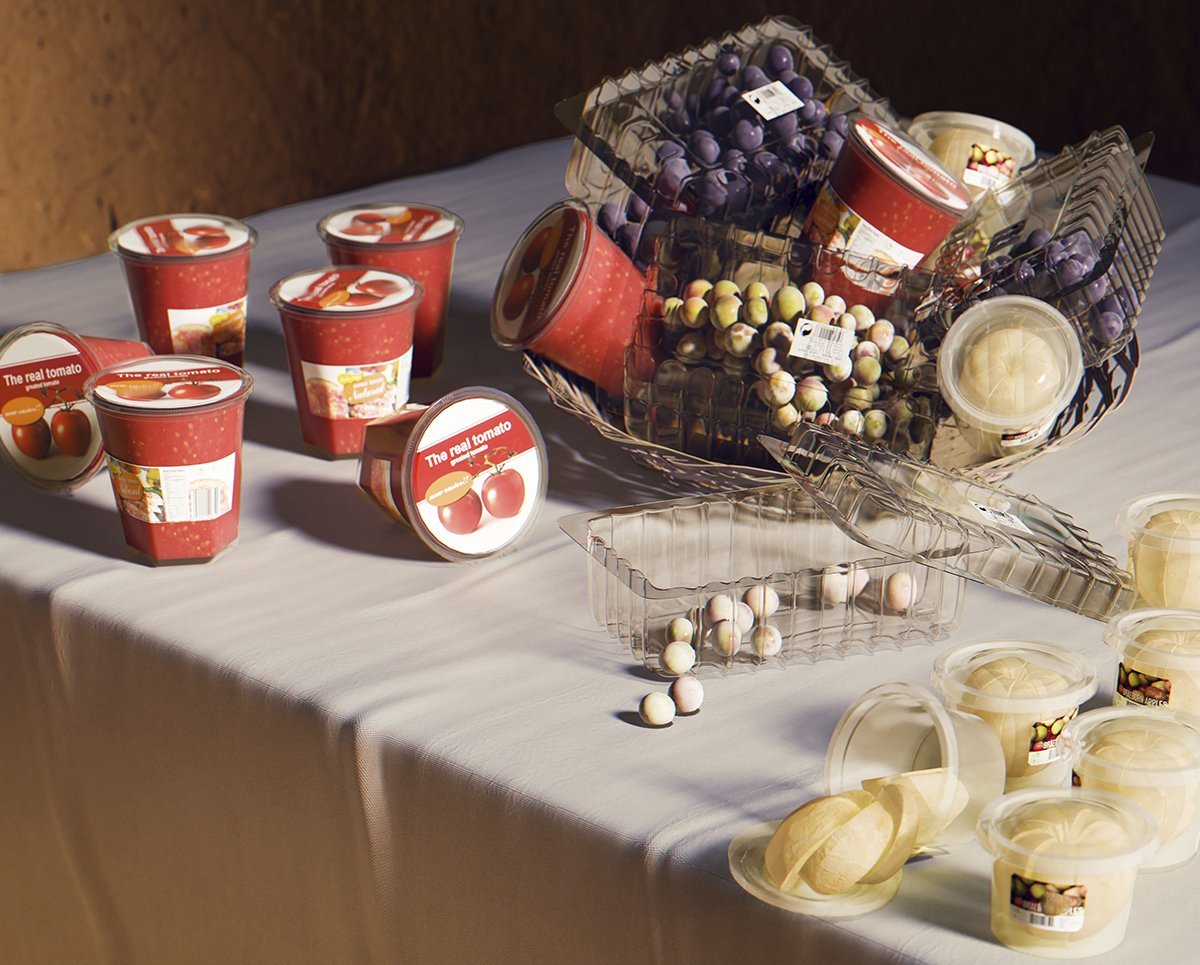Ed Pak
All students in all schools in the district will receive a print copy of this educational workbook for the Then | Now | ART : 150 Years of Stanthorpe’s Creativity exhibition. Many thanks to the Gambling Community Benefit Fund and the Stanthorpe RSL for supporting this initiative.
See below for information, links, and extra activities.
The Ed Pak is also available as a Flipbook or PDF.
Teachers: we’d love to share the art your students create for these activities. Please email photos through to artprize@srag.org.au (make sure that attachments have filenames with the artist's name so we can keep track of them).
We pay our respects to all the traditional custodians of the land, Elders, past and present, and the Aboriginal and Torres Strait Islands Elders of other communities who may live here.
Pre 1871
We would like to thank the Kambuwal people for allowing us to use this image.
Photograph by Sandra McEwan.A time before ...
The earliest rock art in Australia is over 17,000 years old, much of it found in the Kimberley region in Western Australia.
Rock art was probably used as a chronicle to convey knowledge of the land, events and beliefs of Aboriginal people. It can be created in many ways such as painting, drawing, stencils or engraving.
The Aboriginal rock art in this photograph was found at Amiens, north-west of Stanthorpe. It is faded, showing red-ochre toned marks and lines on the granite rock surface. It has been there for an undetermined time and has not been dated. It measures approximately 50 cm high and 150 cm wide.
This photo of Jean Harslett pictured with the rock art in 2009 shows the scale of the work. Courtesy Harslett family.
The traditional inhabitants of the Granite Belt region are the Kambuwal people.
Along with the rock art, Bora Rings and other ceremonial sites have been found in Ballandean, Girraween (Bald Rock Creek valley) and Maryland. These sites may have been used for trade, gift exchanges, marriages and ceremonial gatherings such as feasts and corroborees.
Before
Investigate
What is rock art?
How and why was it created?
How do different cultures ‘leave their mark’ and tell their story?
Early
A symbol is a mark or sign that has another meaning. Aboriginal and Torres Strait Islander peoples used symbols in their art as a way to represent people, objects and actions, to tell stories and record events that are important to their groups. Develop your own symbols to represent important people, places and objects to you. Draw these on an outside wall or footpath with chalk. What story do they tell about you? What will happen to your chalk over time? How is this different to the rock art?
Primary
Aboriginal and Torres Strait Islander art, including rock art, is still found in various regions throughout Australia. Paint on a small smooth rock to show a message, special place event or person in your life. Paint this in your own style and leave it in a space for someone to find. Imagine it is found 100 years from now—what will people think and understand about you?
Secondary
Experiment with mark making using varied lines on different surfaces (e.g. paper, wood, fabric, metal, plastic, cement, hessian…) and with different mediums (e.g. ink, pastel, paint, gouache, charcoal…). What different line, tonal and textural qualities are produced?
Look at the approximate dimensions of this rock art—how does knowing the scale change how we might regard it, compared to seeing it as a photo? Why do you think it was created at this scale? Why was rock art an important form of communication at that time?
1872-1881
Original photo by Martin Roggenkamp.
Photo courtesy State Library of Queensland.
Engraving from Australian Town and Country Journal, 18 June 1881.They came ...
This wood engraving based on a photograph by Martin Roggenkamp, depicts the opening of the Stanthorpe Railway Station, Queensland, held on Thursday 5 May, 1881. The opening extended the line from Warwick to Stanthorpe and was 65 km long.
In 1887, the line was extended to Wallangarra and connected to the NSW railway network. The railway line brought goods and services to the district and allowed produce to be sent to other areas of Queensland.
Passenger trains ran until 1972. The Downs Explorer now runs a monthly steam train heritage tour from Warwick to Wallangarra.
The photographer, Martin Roggenkamp (1837–1912) was born in Germany and arrived in Australia in 1862. He had a photography business in Warwick and, later, Toowoomba. The name of the engraver is unknown.
Before
Connect
Have you ever been on a steam train? How is it different to a modern train?
Reflect
This image was based on a real event that happened in the 19th Century. Why do you think they had to make an engraving for the paper and not use Roggenkamp’s photograph?
Early
Look closely at the scene. List everything you can see in the image. Divide the list into natural and man-made. Draw yourself as a passenger in a carriage of the train looking out the window. With your class, join them all together to make a full train ready for its next departure!
Primary
Visit the Stanthorpe Railway Station—what original features still exist that you can see in the artwork? What has changed? Imagine you were at the opening of the Stanthorpe Railway. Brainstorm the 5 senses from viewing the artwork and write a short sensory paragraph of this imagined experience. Create a drawing that shows the energy and excitement of an event e.g. birthday party, a concert, a sports game. Use colour to help create the mood.
Secondary
Identify the different drawing techniques you can see in the engraving. How has the artist used line work to create detail and tone? Use similar mark making techniques to complete a drawing of your own topic. Crowds and figures have long been a theme and feature in art. Compare Roggenkamp’s photograph with one of the following artworks, and how people and crowds are depicted (e.g. focal point, detail, composition, colour, mood, style):
Below, from left to right, Renoir’s Dance at Le Moulin de la Galette; 1876. LS Lowry’s The Mill Pendlebury; 1943. George Groz’s Metropolis; 1916–17. John Brack’s Collins St, 5pm; 1955. Antony Gormley’s Field; 1989–2003.
1882-1891
Courtesy State Library of Queensland.Development
Robert Saunder Rayment (1839–1893) was born in London and from an early age showed a talent for painting. He was a pupil of John Ruskin—a famous painter, academic and polymath. Rayment moved to Australia in 1887 and spent his first two years in Queensland, travelling and painting pictures and commissions for local station owners.
This painting of Stanthorpe towards Mt Banca would have been painted from close to where the IGA is now. The building to the left is still an internal part of The Little Larder café on Railway Street.
Before
Investigate
What is landscape painting? Do you recognise this place in Stanthorpe? Where in Stanthorpe is Mt Banca?
Reflect
How do artists decide what scenery and viewpoints to portray? Why do you think Rayment chose to paint this aspect of Stanthorpe?
Early
Identify the colours you see in the painting. Think of some adjectives to describe the colours he used— vibrant, earthy, dull, bright, dark, pale? Why would he have chosen these colours? What season and time of day do you think it is, from the colours he used? Re-draw this scene in pencil and paint it using different colours. How does this change the details and feeling of the artwork?
Primary
This artwork is created in a landscape orientation. How might it look different if it was done in portrait format? Choose an outside area and take photos of it in landscape and portrait orientations. Compare your images—how does this affect what viewers interpret of the area? Has the focal point changed? What detail is missing or enhanced? What sense of the place do you get with each one?
Secondary
Read the background information for where in Stanthorpe this painting was done. Visit in person or find a recent photo of a similar vantage point. How has the landscape changed since 1888? Experiment with watercolours to make tones and colours similar to the artwork and test different brush marks and textures. Using a photo of this viewpoint today, paint a watercolour study of this scene.
1892-1901
Courtesy of the Greenup Family. Photograph by Sandra McEwan.A nation emerges
These boots were worn by Marion Greenup (née Marsh) (1847–1920). The style of the boots indicates they were made in the late 1800s.
On the inside of the boots is stamped a ‘3’, with the boots measuring 24 cm long and 19 cm high (from heel to the top of the boot).
In pre-railway days Maryland was a township of some importance, but the completion of the railway to Stanthorpe reduced traffic and the settlement. The bushranger Captain Thunderbolt (a.k.a Frederick Ward) is said to have passed through the area many times.
Maryland Station was a very large (200,000 acres) and prosperous station, and the current town of Stanthorpe sits partially on land that was once part of the station. The main street of Stanthorpe, Maryland Street, was named in acknowledgment of the original property. Marsh and Greenup Streets were named after Marion’s family.
Before
Investigate
What is an artefact? Research fashion from the late 1800s and early 1900s. What did men and women wear? Why would shoes like these have been used or worn? What happened at Maryland Station and who lived there?
Reflect
These boots have various details. Do you think fashion and the design of clothing can be considered ‘art’?
Early
Look closely at the boots. Who do you think owned them? What do the boots tell you about that person?
This object is considered to be an artefact—why do you think this was kept/preserved? Make a time capsule with your class (real items or draw objects)— what item would you choose to put into it and why?
Primary
These boots are an example of fashion of that time. Think about the landscape of Stanthorpe back then, worn by someone from Maryland Station—are these shoes practical? Discuss this as a class.
Shoes can show a lot about the time period, lifestyle and even personality of the owner. Look at Van Gogh’s studies of boots—set up a pair of your own shoes and complete a drawing with oil pastels in his impasto sketchy style.
Secondary
View the installation Over the Continents by Japanese artist Chiharu Shiota. Most of the shoes have handwritten notes by the owners explaining their importance. Can these be considered artefacts? Imagine the owner of these Maryland boots had left a note—what might they have said about their life or time spent in these shoes?
Create a collaborative installation with your class using small personal objects that may serve as artefacts in the future. Play with the arrangement of the objects. Using Shiota as inspiration, add a small note with each object. How is your object significant to you?
1902-1911
Courtesy of the Harslett family. Photograph by Sandra McEwan.Civic order
Glen Aplin is a rural village on the New England Highway, 14 km south of Stanthorpe. It was named after an early mine proprietor, Oliver Dyson Aplin.
The Warwick to Stanthorpe railway line was extended through Glen Aplin to Wallangarra in 1887.
This town plan shows the allotments available, and touts Glen Aplin as “Queensland’s New Health City.” The vision for the town included botanical gardens, health resorts and picture theatres.
Before
Investigate
What is an aerial map? What does a town planner do? Do you think the person who created this town plan was artistic as well?
Connect
Have you been to Glen Aplin? What buildings and things are there? Is this different to the plan?
Early
What does Stanthorpe look like from the air (a bird’s eye view)? As a class, construct an aerial map of your school or Stanthorpe on a large sheet of paper or whiteboard. Start with the main buildings, places and features and go from there.
Primary
Design your own town, or re-design Stanthorpe. What features, areas and amenities will you include, where and why? Label and colour your design.
Look at work by Australian artist John Olsen who created abstract landscapes and scenes from an aerial perspective. How is this different to the town plan? Using straws and ink or watered-down paint, blow liquid around the page. When dry, add extra lines and details to make your own abstract landscape.
Secondary
Create a 3D model of the proposed city of Glen Aplin. Divide the town into sections and work in small groups to re-create each one, merging all of them together to see what it may have looked like!
Read the information and language used on the poster. What terms do you not know or are no longer used? How is Glen Aplin and the Stanthorpe area described? Come up with your own phrases, descriptors and figurative language that might persuade people to live here.
Look at the fonts and graphic elements around the border of the plan—how does it add to the visual interest of the poster?
1912-1921
SRAG Collection.War!
The last major pandemic—the ‘Spanish Flu’—began during the last year of World War l and spread throughout the world by soldiers returning home.
Wallangarra was the site of a quarantine camp from 1918–1919. Border camps were established to keep all people entering the state in quarantine for a period of 7 days. Records from that time indicate 3,638 people were quarantined at Wallangarra.
Before
Investigate
What is a historical photograph? Is this photograph a primary or secondary source of the time? Check out Photography by MoMALearning.
What is a pandemic? What was the ‘Spanish Flu’ and why was it called this?
Connect
Think about your experience with Coronavirus during the past 2 years. What have we had to do differently to protect ourselves and the wider community?
Early
Look at the tents—what shape are they? How are they arranged at the site? Using white paper, create your own tent structure. What shape will you make it? Create your own tent city by arranging your class tent structures together.
Imagine you were in one of the tents during winter. What do you think it would have been like?
Primary
The Spanish Flu affected the world much like Coronavirus today. Looking at the photograph, how is it different to the way people are isolating today? Have you ever camped in a tent? What do you think it would be like to be confined in a tent for a long period? Draw what items you would need and want with you in the tent.
Write a short passage about what it would be like to be at the camp, from the perspective of a patient, nurse or doctor. You could make this a letter to a loved one, a diary entry, a letter to the editor.
Secondary
Read me: Mask wearing: A historical, cultural and ethical perspective (Journal of Paediatrics and Child Health 57 (2021) 176-177).
Look up the history of masks. What different purposes have they served? What design, features and details have they had? Consider ideas of identity, decoration, protection, culture, religion, ritual, theatre, disguise, fashion. Design and create your own mask. What purpose will it serve? How will this influence what it looks like?
Decorate a face mask in relation to your personal experience and view of COVID. Find a printable mask template, paint onto a physical mask, or create your own with an armature structure to make it 3-dimensional.
1922-1931
Courtesy of Elisabeth Ogston and Ruth Aaskov. Photographs by Sandra McEwan.Soldiers return
The painting of the Bishop family home at Mount Tully is the only known collaboration by two local artists in 1922.
Ernest Leonhardt Schoch composed the pencil sketch of the building from which another local artist, Kevin Vincent Gunn, created the watercolour painting.
Ernest Schoch arrived at Mount Tully in 1921 to take up the position as the first school teacher for the new state primary school. Further along Mount Tully Road, Kevin Gunn was farming with his wife and children.
Before
Investigate
What is the difference between a sketch and a drawing?
Connect
Do you live in the bush, on a property or in town? What would it have been like to live in a house like this? Do you think it had electricity?
Early
Spot the difference! Compare the watercolour painting with the sketch that inspired it. What things look the same or similar? What can you see that is different or changed? Why do you think this is?
Go outside and do a pencil sketch of a building and its surrounds, or something interesting in your environment. What details will you include? On what will you focus? What is it like drawing outside?
Primary
Sketch your own house. From what angle will you draw it? What details will you include?
As a class, sit outside and choose a scene to sketch. Once completed, show and share your results. What is similar and different about how people have depicted the scene (e.g. focal point, details and scale of imagery)?
For both activities, consider the details of the foreground, middle and background. TIP: Make a viewfinder to help you select the focus of your sketch.
Secondary
As individual class members, each choose a section of this image to recreate in watercolour then put the sections together. What was your experience of watercolour like? Were you successful in creating similar colours, tones and textures? Replicate the same section using several mediums e.g. charcoal, pastels, lino print, felt pens. How do the different media alter the image (e.g. visual quality, style, mood, texture and details)? Which is your favourite?
1932-1941
Courtesy Harslett family. Photograph by Sandra McEwan.Hard times
Robert Emerson Curtis (1898–1996) was born in England in 1898. His family migrated to Australia in 1914, settling in Stanthorpe, Queensland. His first break came after a cartoon he drew of an angry farmer was published in the Qld Farm Bulletin, earning him 10 shillings. This was more than his father paid for a whole week’s work.
In 1918 he moved to Brisbane with five pounds (£5), a folio of his drawings and a bike.
Curtis worked as an illustrator, cartoonist, architectural draftsman, camouflage officer and was appointed Official War Artist during WWll. The Australian War Memorial holds more than 200 of his works. His documentation of the building of the Sydney Harbour Bridge is widely admired.
He came frequently to Stanthorpe to visit his sister and her family.
This drawing depicts the land at Amiens that was cleared and burned for the establishment of the Passchendaele State Forest.
Before
Connect
The artwork depicts intentional clearing and burning of the land. Stanthorpe recently experienced fires of a different kind with the 2019 bushfires. What was your experience of the fires? Can you see evidence of the bushfires today?
Reflect
Think about ‘fire’—why is it important? How does it help us in our lives? How can it be dangerous? How can we protect ourselves from fire? What things can cause or create fire?
Early
What colours do you associate with fire? How would you describe them? Think about the different stages of fire. How do the colours change? How does the landscape change?
Draw one of these stages of fire using the colours you brainstormed. It could be a BBQ, bonfire, bushfire, in your fireplace, or somewhere else.
Primary
How is fire important to Aboriginal and Torres Strait Islander peoples? How do they use fire to protect, manage and help the landscape?
Read Cool burns: Key to Aboriginal fire management.
Charcoal is a black and brittle material left after wood and other materials are burned. Use charcoal to create a drawing. It may be related to bushfires, a landscape or your own choice of topic.
Secondary
Fire has been a stimulus for artists throughout the years. Read about and view artworks from the ‘RISE’ exhibition that used bushfire charcoal as a medium to create artworks. Experiment with various methods, techniques and approaches to your use of charcoal. Document these in your Visual Diary.
Watch the following video from ABC Arts: Sydney artist Gemma O'Brien is taking a hands-on approach to bushfire relief - by making art with charcoal from the NSW Southern Highlands.
Create your own artwork, using one or more techniques with charcoal from your experiments.
1942-1951
SRAG collection. A painting from an old photograph by an unknown artist.Coping at home
In the Stanthorpe Regional Art Gallery’s records, this painting is dated ca 1940s; a note tells us it is “one of the pioneer families of this region”. Historically, the clothes they are wearing are from an earlier era; it is thought that the work was copied from an old photograph.
The Sheahan brothers moved to Stanthorpe during the tin rush. They were key contributors to the progress of Stanthorpe and district.
Denis Sheahan owned Sheahan’s Hotel (now the Central Hotel). Daniel operated a butcher shop on the corner of Maryland and Grigg Streets (later renamed Victoria Street). John Sheahan ran the Hibernian Hotel and then was a storekeeper and draper in Maryland St near the site of the Country Club hotel which his daughters ran.
Sheahan’s Hotel was opened in 1909—an advertisement describes a two-storey brick hotel with thirty bedrooms and four parlours and a 12-foot balcony all around, hot and cold-water baths and large airy rooms. It was one of the largest buildings in the town at the time of construction.
Before
Investigate
What is a portrait?
Connect
Have you had a portrait made with your family? How was it done? Do people still have their portraits painted?
Reflect
Consider the different reasons a portrait may be made. Are portraits important? How might portraits help us understand people from earlier times?
Early
Look closely at what the men are wearing. What is the item hanging from their vest pockets? Do these exist today? Would everyone have had this type of object?
Recreate their poses—how does posing in that manner make you feel? How do you normally pose for photos?
Draw a portrait of a family member, classmate or friend. How will you get them to pose? What outfit and details will you include that shows something about them?
Primary
Imagine the Sheahan Brothers today. What clothing would they wear? Re-create the artwork but draw the brothers wearing modern day clothes. What might their facial hair be like?
Secondary
Compare this portrait with Peter Rossi’s Disconnect that featured in the Stanthorpe Photography Awards 2021.
Can this be classified as a family portrait? Discuss the differences in purpose, meaning, composition, media and viewer response.
Create an interesting family or group portrait. Consider how you want your figures to pose, their facial expression, clothing, accessories, and the setting. Take photos using a smart phone or i-Pad, then experiment with digital filters and apps to create a contemporary digital portrait.
1952-1961
Courtesy Harslett family. Photograph by Adrian Ashman.New perspectives
Dorothy Curtis Gordon (née Gemmell) was born in Stanthorpe in 1930. As a young child Dorothy had a passion for drawing—especially horses—which she captured in every action and form. An old blackboard on the verandah of the family home “Braemar” nestled in the Glen Aplin hills, would reveal a new illustration each day created by Dorothy.
In the 1950s, Dorothy began painting Australian native flowers—these have been described as noteworthy not only for their scientific accuracy but also for their artistic quality. The gallery at Myall Park Botanic Garden in Glenmorgan, Qld, was created to showcase her watercolour botanical art.
Before
Investigate
What is botany? What is botanical illustration? Why do you think artists choose botanical subjects?
Reflect
Do you think botanical illustration is ‘science’ or ‘art’? What reasons do you have for your opinion?
Early
Complete a ‘Wildflower Walk’.
Walk near the gardens at your school (or house) and take notice of the different plants and flowers. Sketch and colour them.
Make your own flower press and use that to create your own flower specimen collection.
How to press flowers | Natural History Museum.
Watch this video: How to make a flower press.
Primary
Botany is the science and study of plants and all aspects of plant life. Why might this be a significant field of work? Why might a botanist’s drawings be important?
Imagine you are exploring a wilderness area and discover a new plant. Draw what this plant might look like. What features does it have—flowers, leaves, thorns, bumps, prickles…? What colours and textures will it have? Give your plant a name.
Secondary
There are many native plants and wildflowers on the Granite Belt. Research plants specific to the Stanthorpe region (see Stanthorpe Rare Wildflower Consortium) and select one to draw. Create a botanical drawing of your chosen plant, taking influence from Gordon’s style.
Many contemporary artists are inspired by botanical illustration, creating their own botanical-based art in their own artistic style. Choose a flower/plant and create your own botanical artwork showing your own personal aesthetic.
Read me: 10 Aussie botanical artists you need to follow (from Greener Spaces Better Places).
1962-1971
SRAG collection. Photography by Sandra McEwan.Civic growth
Doug Croston (1915–2005) was a painter, printmaker and photographer who worked in the minimalist style. He was born in Brisbane in 1915. He studied art overseas in Papua New Guinea, the UK, USA and Europe. Between 1945 and 1968 he operated Croston Studios, a portrait and commercial photographic business in Stanthorpe. Doug was the first president of the Stanthorpe Art Gallery Society and had a long-term involvement in the Stanthorpe Little Theatre.
Before
Investigate
Research art from the Minimalism art period—what is it about and what are its characteristics?
Reflect
Research the size of the artwork. Does this surprise you? How might experiencing an artwork in person change your response to viewing it as a picture?
Early
Create your own colourful artwork like Doug Croston’s. Cut up coloured paper into different geometric shapes and sizes. Arrange the paper shapes in different layouts before gluing your favourite composition onto black cardboard. Leave some spaces between each shape to create black lines for the eye to move around.
Primary
Colour is a major design element of this artwork, as suggested in the title. Explore the dynamics of colour by playing with different arrangements and colour combinations (use coloured paper or paint swatches). What happens when certain colours are next to each other? Do they recede, contrast, brighten? Does the ‘saturation’ and ‘value’ of a colour (‘hue’) affect this?
Secondary
Research the art movement of Minimalism. What characterises this art movement and its style? How does Croston’s artwork reflect the ideas of minimalism?
Create your own minimalist painting. You may stay true to the minimalist aesthetic and use shapes based on the square and rectangle or use other geometric shapes to develop your own interpretation of minimalism. Will your work have a focal point? Will you create this through shape, size or colour? Paint your artwork using the flat colour technique.
1972-1981
SRAG collection. Photograph by Sandra McEwan.Festival of Art
Alan Bourne had no formal training as an artist. He was tutored by several artists, including the renowned Murray Walker. He has works in the National Gallery of Victoria, UQ Darnell Collection and Kelvin Grove (Brisbane) College of Advanced Education.
This work is a representation of still life realism. The popular appreciation of the realism of still-life painting is told in the ancient Greek legend of Zeuxis and Parrhasius, who are said to have competed to create the most lifelike objects, history’s earliest descriptions of trompe-l’œil painting.
This work was entered into the first Stanthorpe Arts Festival in 1972 and was acquired by the Stanthorpe Regional Art Gallery. The work depicts a wooden storage apple box which was used at the time for fruit transport.
The artist may have chosen this subject in an effort to contextualise his Art Festival entry.
Before
Investigate
What is ‘still life’ in art? View examples of this genre in an art book or on the internet.
Connect
Do you eat apples? What is your favourite type of apple and why? Do you know which varieties of apples are grown in Stanthorpe?
Early
Colour is a dominant element of design in this painting. Describe the colours the artist has used. Why do you think he used so much blue? What would happen if the artist used orange and yellows instead?
A still life is a drawing or painting of an arrangement of objects (non-living/not moving). Use objects in your classroom or at home to set up your own still life. Think about how you will arrange the objects together. Draw the main shapes and details. Complete your still life with colour, making it fresh and bright like Alan Bourne’s artwork.
Primary
Can Bourne’s artwork be categorised as a still life? Look up images of still life artworks and compare these to Bourne’s painting. Why do you think he chose to have no apples in the crate? How would a crate full of apples change how we experience the artwork?
Apples are iconic and important to Stanthorpe’s industry and identity. Choose an object that is meaningful to you. Create a set-up with a simple backdrop and cloth. Photograph, draw or paint it. Think about the colour palette to make the objects stand out.
Secondary
Set up a non-conventional still life using fruit as the subject. Experiment with different ways of arranging, altering, depicting and representing the items—think outside the box! Photograph or draw your still life and reflect on your explorations.
Bourne’s artwork focuses on a fruit container as the subject. View the series Not Longer Life by Spanish studio Quatre Caps which offers a contemporary perspective on the still life genre. Compare these works to Bourne’s painting—do they share any qualities? How does this change the perspective for viewers?
Part of the series Not Longer Life by Spanish studio Quatre Caps1982-1991
SRAG collection. Photography by Sandra McEwan.A new home for Art
Carolyn Dodds (1953–) was born in Australia, moved to England as a child, and returned to Australia as a young adult. She has lived in the Brisbane region for many years. She is a printmaker who has worked with wood-engravings, linocuts and lithographs.
The Subtle Alchemist was a print commission for the Queensland Winemakers Association. At first glance, viewers see a man in a vineyard, pruning already bare vines on what seems like a cold wintery day. On a deeper level, Carolyn Dodds refers to Christian symbology in its imagery—the vertical and horizontal lines of the vines are an allusion to the crucifix; the spindly stems reminiscent of thorns, and the setting and subject matter of vines and wine implies a connection to the ‘blood of Christ’. Her lino carving technique is skillful; she uses high contrast and various textures to create a visually appealing artwork.
See more of Carolyn Dodds’ work in her 2016 Hypercathexis exhibition catalogue.
Before
Investigate
What is lino printing? How many wineries are there in the Stanthorpe region?
Reflect
What is an ‘alchemist’? Why did the artist use the term to title her print?
Early
What season do you think the artwork is showing? Describe the sky in the artwork in only five words. Observe the sky at school or home by taking a photo each day for a week—how does it change? What colour is it? What shape are the clouds (if any)? How much space in the sky do they occupy?
Do a painting or pastel drawing of the sky at your favourite time of day—sunrise, day time, sunset, night time. How might you depict the feeling and weather at this time of day through your lines and colours?
Primary
The wine industry is important to Stanthorpe. In what other ways could you show this topic in an artwork? Brainstorm things to do with vineyards and wineries with your class group.
Contrast, line and texture are important elements and principles of design in this print. Write a paragraph analysing how they are evident in the artwork.
Choose an interesting local landscape setting. Recreate it with scratch art paper or black felt pen to create a black and white image that uses contrast, line and texture to create visual interest.
Secondary
Study the artwork then use it as stimulus for a short written piece (poem, paragraph, diary entry, letter). Brainstorm the five senses the artwork evokes to help your writing.
How is the landscape image enhanced through the medium of lino printing? Make your own lino print, considering the elements of line, texture and contrast.
If possible, source part of a grape vine (leaf, tendrils, grapes) and create a folio of mixed media experiments—sketch it, print with it, draw on it, stitch into it, roll it, fold it, bind it, squash it, use the grape juice as an ink to draw …
1992-2001
Courtesy Harslett family. Photography by Sandra McEwan.Cultural explosion
The artist Dr Hilda Bryzenski was the first candidate for a PhD. from the distinguished course in wildlife illustration unique to Newcastle. She won first place in the Black and White Illustration Competition held in conjunction with the 28th AGM and Scientific Conference of the Australian Entomological Society held in Melbourne in 1997. Dr Bryzenski lives in Stanthorpe.
Temognatha is a genus of metallic wood-boring beetles. Over 85 species in the genus are native to Australia. This new species was discovered in the Granite Belt region in the mid-1900s by Alex Gemmell, and was named after him i.e. “gemmelli”. It was collected on flowering leptospermum (tea tree).
Before
Investigate
What is a ‘minibeast’? What is ‘entomology’? In Science, plants and animals are classified through ‘taxonomy’ and ‘binomial nomenclature’—look up what these terms mean. Watch Classification of Living Things by Mark Drollinger.
Reflect
Do you think insects are important?
Early
Beetles are a type of ‘minibeast’.
Find a ‘minibeast’ in your garden at school or home and draw it. Take a photo (if possible) or look it up on the internet to study it in more detail. Label the parts.
Design your own beetle or minibeast. Draw the outline and main lines in black pen then add colour using oil pastel or acrylic wash.
Primary
Create a small soft sculpture of a beetle using found or recycled materials such as cardboard, foam, wool or fabric off cuts, cane, wire, bubble wrap. Consider how to develop the structure and form before decorating and embellishing the surface with things like beads, buttons, sequins, seeds, stitching, pipe cleaners, fabric. Look at Queensland artist Kym Latter’s Isolation Beetle Project for inspiration.
Secondary
The artist has labelled the beetle in her drawing. Research the genus and species of this beetle—are they all this vibrant? Use your research to inspire your own series of beetle studies.
The dark lines and marks in the artwork are reminiscent of monoprinting. Create a series of monoprints of a beetle and explore the unpredictable ink qualities of this print form—vary the line details, the areas where you put pressure, and the amount of ink you use. When dry, experiment with different media to add colour—watercolour, inks, gouache, pastels. Try the technique of chine collé to play with collage and colour before monoprinting on top.
2002-2011
SRAG Collection.Looking back, looking forward
Julie Shepherd is a ceramic artist from bayside Brisbane. She creates exquisite functional and sculptural artworks using pierced and translucent fine porcelain clay. Her works express the fragility of life.
Oz Pods are inspired by the natural environment— both its precarious balance and inherent resilience. Julie’s practice of piercing objects has resulted from observing nature’s lacelike structures through an electron microscope.
This work won the 2002 Stanthorpe Arts Festival ceramics prize and is part of the Stanthorpe Gallery’s permanent collection.
Before
Investigate
What is a ‘pod’? Look up a definition and find images of natural (seed) pods.
Early
Look at the ceramic pods and the patterns on them —make a list of shapes and lines you can see. Have you seen any of these shapes in nature?
Choose your favourite and draw it.
Collect some natural seed pods. Make some contour drawings of different pods to show the main shape, lines and textures.
Primary
Shepherd’s pieces have delicate and interesting pattern work created by drilling into the clay. These areas and the plain surfaces create a contrast of positive and negative space.
Create a pin hole artwork using her designs as inspiration. You will need thick paper, a paper plate or a thin piece of styrofoam. Use a push pin or an etching needle. Lightly draw a design in pencil and use your needle carefully to push through the surface to punch in the design. Vary the size of the holes by modifying the depth of the needle. Choose the entry or exit side to display for a smooth or textured look.
Secondary
Consider the title Oz Pods. Where do you think Shepherd got her inspiration for her clay forms?
Create your own organic forms inspired by the shapes and forms of Shepherd’s Oz Pods.
Use paper clay, air dry clay or real clay. You can decorate the surface in a pin hole manner using a skewer, or develop your own decorative style and technique to create texture, pattern and interest on the surface. Display them together or individually. How might your presentation choice affect how viewers interpret or interact with your work?
2012-2021
Street art. Photography by Sandra McEwan.Culture and community
The Backpacker Mural is located next to the Stanthorpe Post Office and is a tribute to the thousands of backpackers who make Stanthorpe their temporary home every year. Backpackers are an essential part of Stanthorpe’s economy as they bring many hands to carry out the important labour in Granite Belt orchards and vegetable fields.
This painting is based on an original image by local artist, Laurie Astill. In 2019, Laurie, Julie Brown and Dean Ford brought it to life as a public art work.
Over the past decade local artists have added dozens of public artworks to the streets and surrounds of Stanthorpe. Find out more on our Stanthorpe Street Art page (including a map of all the street art locations).
Before
Connect
Have you seen this mural? What other types of street art are in Stanthorpe? Do you have a favourite?
Reflect
Why does Stanthorpe have a mural dedicated to backpackers? In what ways are backpackers relevant to our town and community?
Early
Study the two people carefully—what objects do they have with them and why?
If you were going on a trip, what would you take in your backpack? Draw a ‘Backpack Monster’ to reveal what might be inside.
Primary
Write a description of the mural, including art language such as background, foreground, tone, texture, focal point and balance.
Imagine you are a backpacker. Create a postcard with a message home on one side, and draw your own chosen aspect of Stanthorpe on the front.
Secondary
Public art can reflect the community, enhance a public area or can be a unique creative expression of an artist.
Research other street art around the world. Share your favourite examples and discuss these as a class.
Imagine that you have been asked to submit a proposal for a new mural in Stanthorpe. What might the subject or topic be?
Work in a small group to design a mural suitable for our public art collection. Select a location in Stanthorpe that is blank and has good visibility. Present your proposal to your class.

